Gypsum lamps
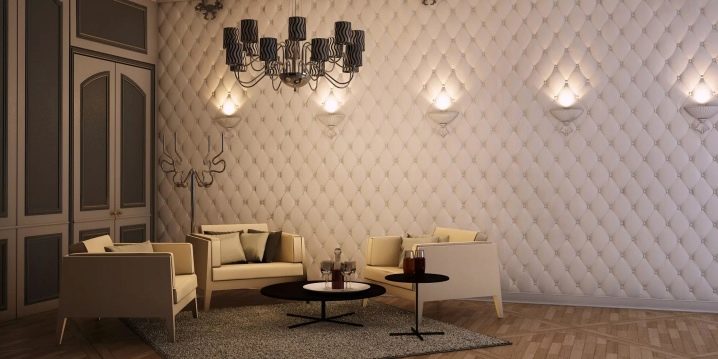
Lighting attributes made of glass, metal, fabric and other materials perfectly complement any interior of the apartment, but they do not always suit the owners of the premises because of bored design solutions. Gypsum lamps are those attributes that allow you to show your creativity, because you can make an individual order according to the size, shape and even the desired colors of the product. And there will be no such model in any room.
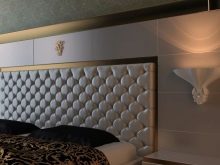
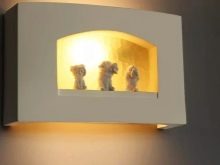

In addition to their unique appearance, such lamps are reliable and safe for health, which makes them more and more interested in buyers.
Features and Benefits
Gypsum lamps are used in the interior as the main source of illumination, as a decoration or to highlight your favorite painting, statuette and other objects. In the latter case, designers are given a lot of opportunities to embody bold and creative ideas.
Such models have a number of advantages that attract buyers:
- Environmental friendliness of the attribute - it is made of natural material without the addition of harmful components.
- Polymers as constituent components make it durable, increasing its resistance to possible mechanical damage.
- A plaster product will not light up if a short circuit occurs.
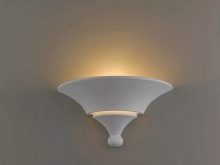
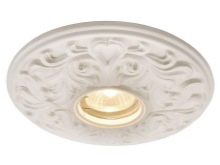
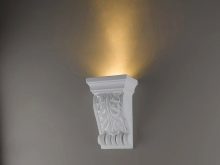
- Easily attached to any structure: suspended ceilings, walls, etc.
- A variety of shapes and shades allow these lighting fixtures to harmoniously fit into the interior of any style direction: classic, modern and even hi-tech.
- Plaster models have a low price, unlike glass or fabric attributes, while they are not inferior to them in originality.
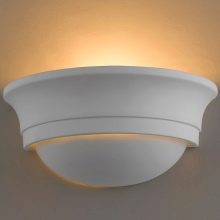
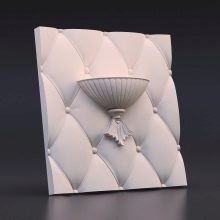
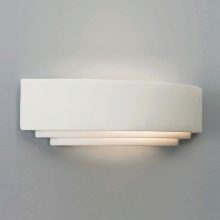
The only drawback is hygroscopicity, but manufacturers have solved this problem by using special impregnating agents.
Plaster fixtures are an affordable yet very creative solution for decorating your home. Due to the absence of harmful components, they can be installed even in children's rooms, and interesting shapes and colors will only decorate them.


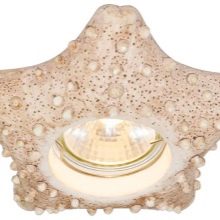
How is it produced?
The production of plaster lamps can be compared to art, since the material of manufacture itself provides many opportunities for the implementation of interesting ideas. Both small items and whole compositions acquire an attractive appearance. This is due to the unique properties of gypsum. Due to the fact that this material is natural, the resulting lighting attributes are ecological, and therefore safe for health.
In the early stages of gypsum production, lamps were created by molding, which resembled the manufacture of clay products. Such a procedure required a lot of effort and a lot of time, so the technology was constantly being improved. The next step was the carving method.
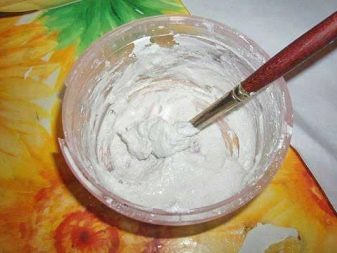
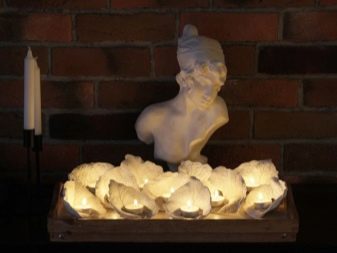
The modern way of creating plaster lighting attributes is the formation of models under pressure or casting on pre-prepared molds for casting. The basis of such forms is made of silicone or metal, and the gypsum structure is fastened using a special glue.
In addition, manufacturers can add synthetic resins to the gypsum mixture, which provide excellent resistance of the future attribute to mechanical stress. Therefore, it is a mistake to believe that lamps made of this material will not last long - they will be more reliable than some glass models.
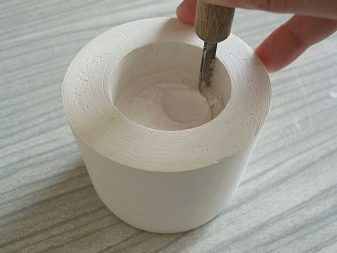
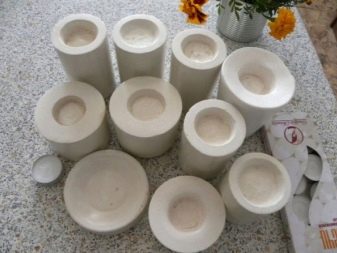
Views
Models of plaster lamps are selected in accordance with their location and future purpose. Ceiling attributes should be purchased for the main lighting; wall products are used to highlight certain areas. Both options can be equipped with designer shades or spotlights. The last option is divided into two types:
- Swivel. Due to the ability to change the position, such a spotlight can illuminate several areas at the same time or focus all the light on one area.
- Fixed. The location is clearly fixed and provides a directed light flux.
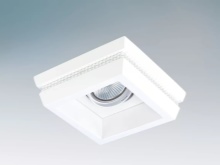
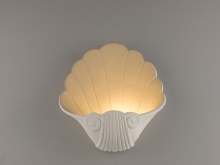

They can also be single and double: in the first case, one swivel or non-swivel spotlight is used, in the second - two attributes located next to each other.
Ceiling point models are also of several types. According to the method of fixing them to the ceiling, there are the following types:
- Embedded with a dedicated platform. Thanks to the rigid fastening, they are installed on any surface of stretch ceilings.
- Mortise. Such models are used for slatted and stretch ceilings. A hole is made in the surface according to the dimensions of the products, which are then mounted on these places.
- Overhead. Already by the name of the product, it is clear that they are superimposed on ceilings. Such lamps are very easy to use, and even a person without experience can install them.
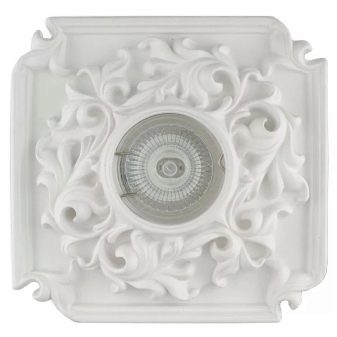
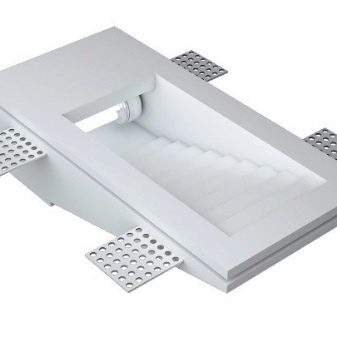
Depending on the location of the bulbs, the attributes are divided into:
- Outdoor. A large enough space is illuminated, but without a directional beam.
- Hidden. They are installed in such a way that there are no protruding elements on the ceiling. But you should not use too many of these lamps, as cracks can go along the ceiling from the constant temperature drop.
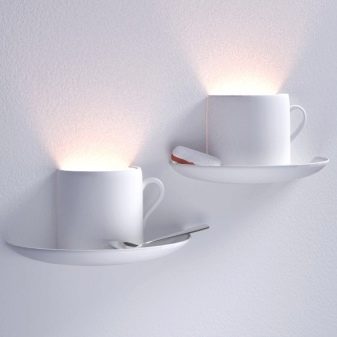
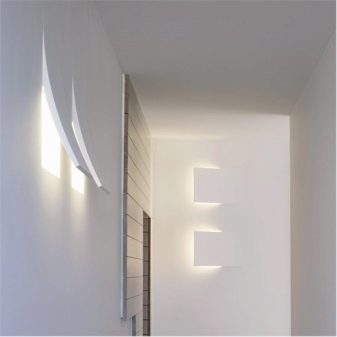
You should know that you can purchase a plaster lamp of a certain color to match the main tone of the interior of the room, however, there are special models for painting. The initial white color independently changes to the desired shade or several tones are combined at once.

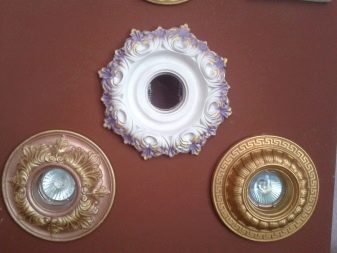
Lamp options
Plaster models of lighting fixtures can be equipped with different types of bulbs, this will depend on their purpose in the room and the size of the lampshade and the base of the bulb itself.
There are the following types of light bulbs:
- Luminescent. They give cold light, therefore they are used in offices or institutions, but not in residential premises. Such lamps heat up a little, but do not withstand voltage drops.
- LED. They can be used as a main or additional light source (night light, backlight, etc.). They are safe for health, pleasing to the eye and durable.
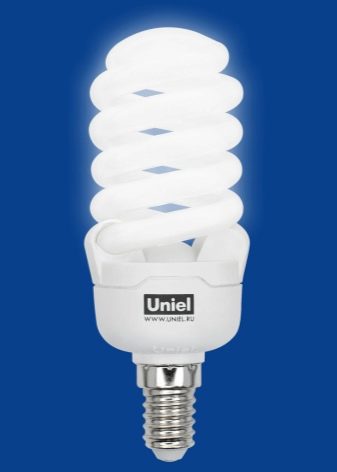
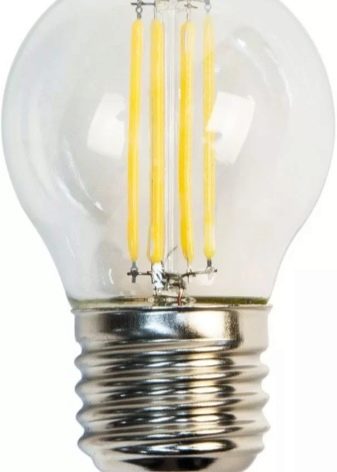
- Incandescent lamps. They are widely used as main lighting, as they provide high color rendering and give a soft diffused light. However, there is a small drawback - they consume a lot of electricity, unlike other types of lamps.
- Halogen. Practical light bulbs that will last a long time. Depending on the shape, they can give diffused light and be used as illumination of a certain area. There are different color schemes, thanks to which the design of the room can be noticeably transformed.

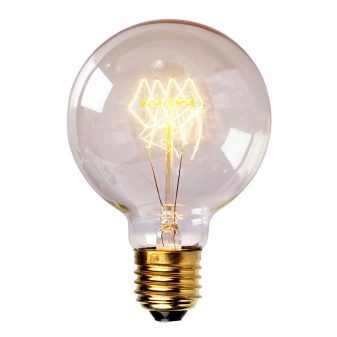
Bulbs differ not only in certain characteristics, but also in their purpose, which is influenced by their size and installation method. All types of light bulbs are suitable for ceiling or wall plaster models, but the best tandem is obtained from LED or halogen. It applies to dot products. In the second case, low-voltage bulbs with normal voltage can be used.
Whichever lamp you choose for a plaster lamp, it should be remembered that this material is very strong and resistant to high temperatures. Such a lighting attribute will not crack or deform.

Scope of application
Plaster luminaires are installed as general or zone lighting. In addition to the main purpose, these attributes can serve as decorative elements. The scope of their application is quite diverse: illumination of paintings, wall panels, small interior items, on which I would like to emphasize, as well as high-quality lighting of small rooms or spacious apartments.
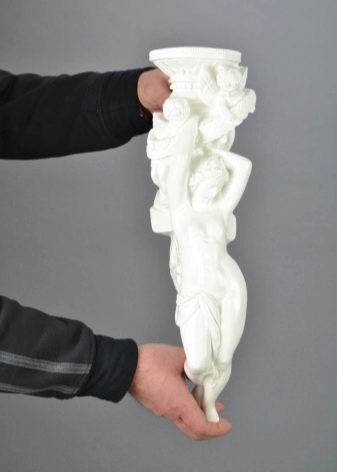

Depending on the shape, size and installation of lighting fixtures, they can have the following purposes:
- Spotlights installed to illuminate certain areas in the room. As a rule, such products are mounted in the ceiling. They have a neat and stylish appearance at the same time.
- Wall models attached to vertical surfaces. Can be used as main lighting or night light (often used in the bedroom). Such attributes will harmoniously fit into the interior of any style direction - from classics to high-tech.
- Ceiling products with LED bulbs will provide high-quality lighting. Such models will be an excellent alternative to overall chandeliers or already bored shades, so they will perfectly fit into a room with low ceilings.
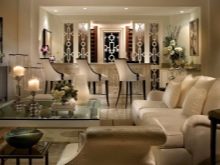
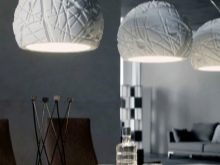
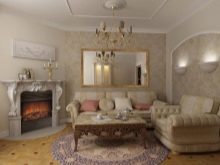
Interesting design solutions allow the use of plaster lamps in small apartments and spacious cottages.
Manufacturers
Plaster models of lighting fixtures are produced by manufacturers in Italy, Germany, Poland, England and other countries. Among the main companies in different manufacturing countries, the following are in demand:
- Italy: Arte Lamp, Ideal Lux;
- Germany: SLV;
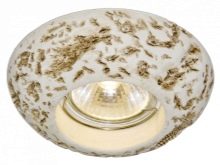


- England: Searchlight;
- Poland: Nowodvorski;

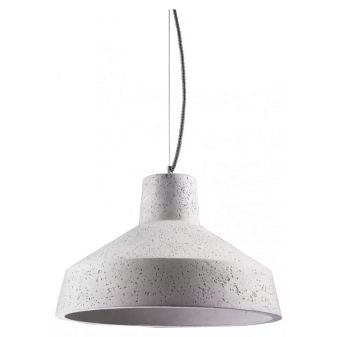
- Ukraine: Imperium Light;
- Spain: Leds-C4;
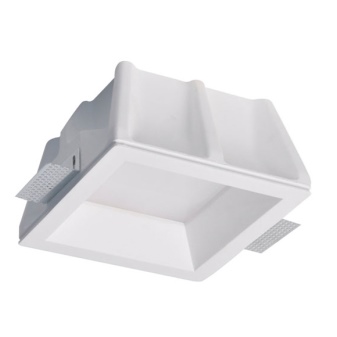

- Belgium: Lucide;
- Greece: Viokef.

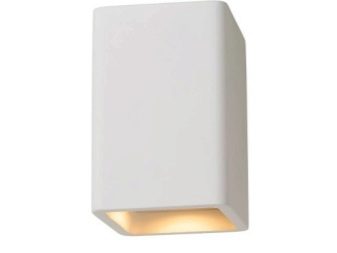
The most popular are the attributes of Italian and German manufacturers who successfully combine high quality and affordable prices in their products. Italian lamps are also interesting for their original design solutions.
Interior ideas
Each type of plaster lamp is capable of creating a completely different lighting effect.
- The wall model will give the room a sophisticated look, especially if it is designed in a classic style.
- In apartments made in the neoclassical style, attributes with gilding or a silver tint are appropriate.
- Ceiling products are a great alternative to bulky chandeliers or lampshades.


- Spotlights give a stylish and modern look. They will fit almost any interior.
- Plaster fixtures can also be used as lighting.
Thanks to interesting design solutions, plaster lighting fixtures can be compared to real works of art that can transform any room.

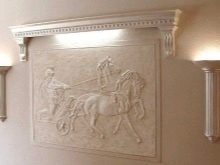

For information on how to make a plaster lamp from a plastic bottle, see the next video.













The comment was sent successfully.